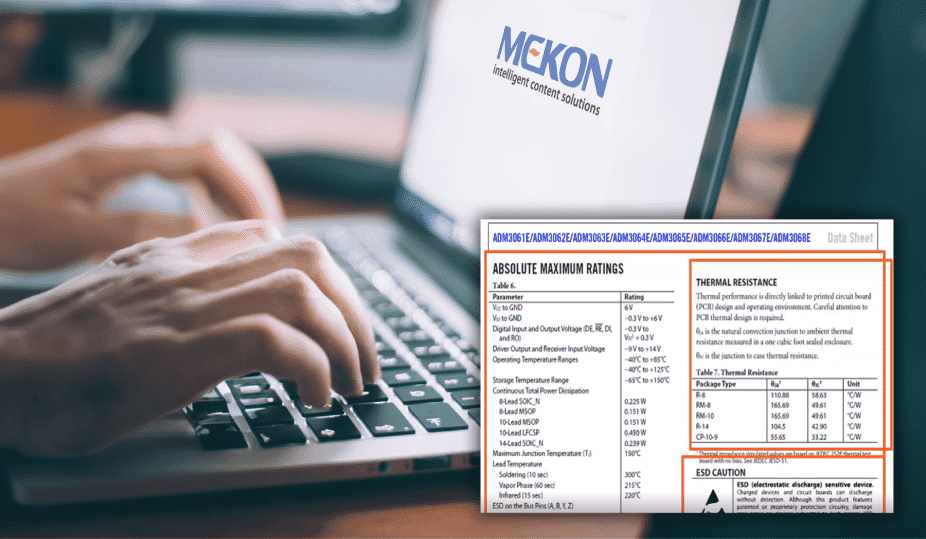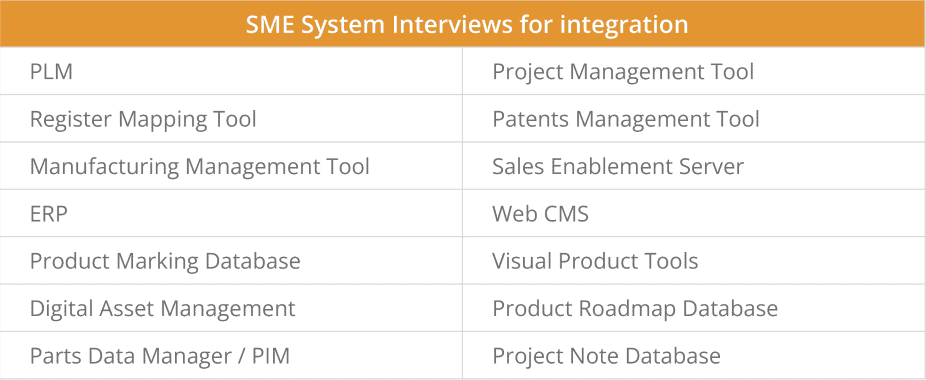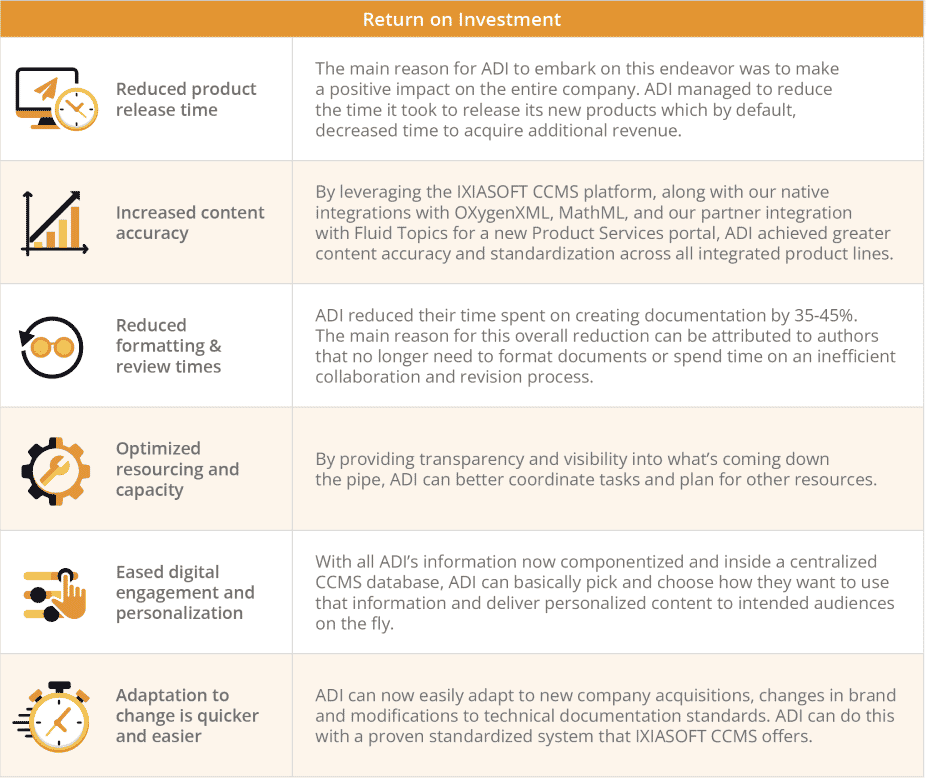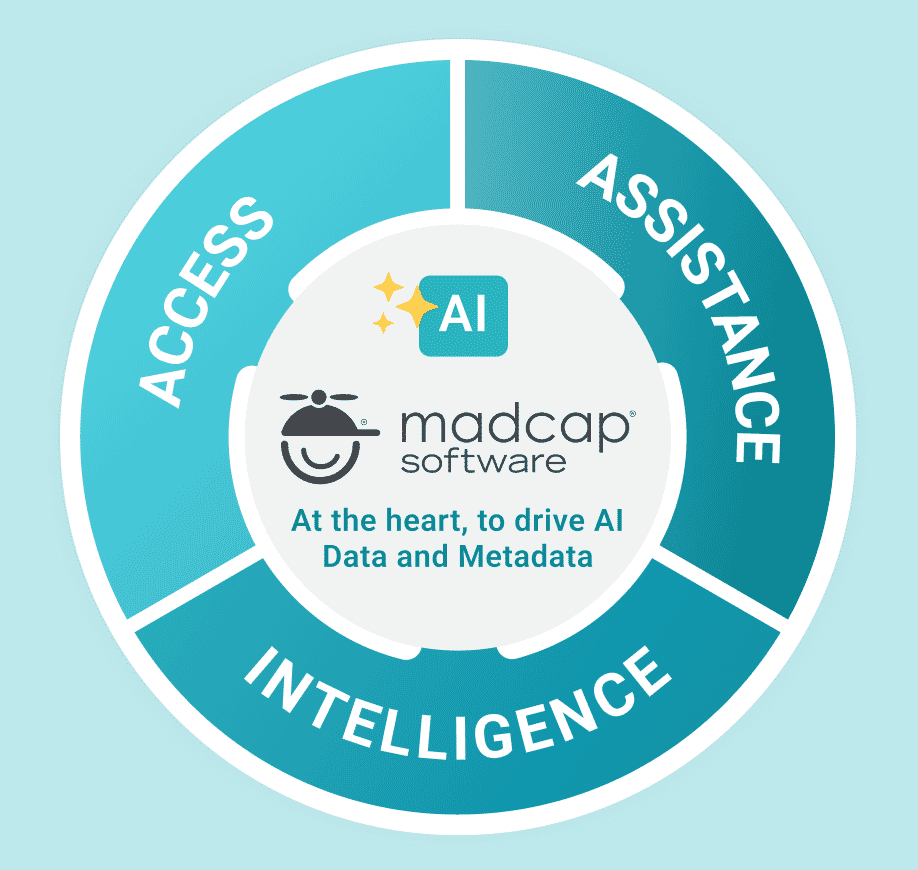Customer Success Story
How Analog Devices Was Able to Centralize Their Documentation Across Departments.
Quick Facts
- (NASDAQ: ADI)
- Founded: 1965
- Employees: 25,000+
- Product SKUs: 75,000+
- Customers: 125,000+
MadCap Software Solutions and Services:
Known as a world leader in the design, manufacture, and marketing of a broad portfolio
of high-performance analog, mixed-signal, and digital signal processing (DSP) integrated circuits (ICs).
Corporate Overview
As the world’s leading chip maker and a multinational organization that distributes
their products globally, in English, Chinese, Japanese, and Russian languages, Analog
Devices, or ADI, is required to document a lot of IP, patents, and related legal filings. Development centers for their 75,000 product SKUs are located across the U.S., Ireland, Philippines, and Malaysia. Additionally, a large proportion of their overall R&D budget is dedicated to product content for compliance and localization across the Globe in over 30 countries.
In addition to some strong sales growth, we’ve had numerous acquisitions going back to 2014.
We acquired Hittite Microwave, then Linear Technologies in 2016, a very large organization, and the driver for our new documentation process proposal – essentially, digitizing all of our content as we grew exponentially. Acquisitions continued with Innovasic Semiconductor later in 2016, One Tree Microdevices in 2017, OtoSense in 2018, and Maxim Integrated, in 2020.
Andrew Leone Senior Marketing Manager, ADI
How Exponential Growth Helped Identify Pain Points
While our growth was good news for us, it also made us realize how antiquated our documentation process had become over the years. And, of course, when product release was imminent, at the eleventh hour, was when all this fragmented information was coming together.
Andrew Leone Senior Marketing Manager, ADI
ADI needed to figure out how to better serve their customers and stakeholders, as they had been using the same structure for documentation creation, editing and revision since the early 2000s; the process was inflexible, and governance was virtually impossible.
Their rapid corporate expansion was creating huge volumes of data in disparate formats: some of the organizations being onboarded post-acquisition were using Excel as their database, others had a significant amount of paper files that needed to be digitally stored and indexed. Some were using InDesign, others FrameMaker.
ADI’s acquisitions were all handling their documentation differently. Therefore, we needed to find a way to bring this assortment of content formats together, somehow transform it all into standard format, and store it in a way that makes accessing modules, like topics, easy for anyone working with our product documentation.
All these issues made us take a better look at our own internal systems: ADI had traditionally used Microsoft Word, but Word wasn’t adequately suited for granular content search or content reuse.
Andrew Leone Senior Marketing Manager, ADI
With the acquisition of Linear Technologies in 2016, Andrew Leone and his documentation team saw an opportunity to get ahead of the curve, so they started an initiative to revamp their entire documentation process.
But exactly how that would lead them to working with MadCap Software and our business partner Mekon is an interesting and educational story about requirements gathering, needs discovery, and how to involve stakeholders across the organization early on.
…we needed to figure out how we could better serve our stakeholders and customers.
Andrew Leone Senior Marketing Manager, ADI
The Pain Points
Andrew and his team considered the technical hurdles they wanted to overcome, in the form of use cases and analogies representing the actual content production-related issues being experienced internally at ADI.
Examples include:
1- The hot potato syndrome
While the term “hot potato” has several meanings, depending on the context – ask a developer about “hot potato issues” – in the documentation world, this refers to the gray area of “who is responsible for this content at this point?” where the document owner has a file locked by an editor, with little to no context, as deadlines swiftly approach.
2- Toss it over the wall
Hope someone catches it and throws it back. The level of communication is also very transactional. The context required for prioritization and adequate resource allocation is not often conveyed.
3- The punishment of Sisyphus
The myth tells the story of a man condemned to push the same boulder up a hill every morning. In a documentation scenario, it’s an analogy for a lack of a managed process or workflow, changes that might get wiped out by someone out of turn, and other versioning-related issues.
4- Copy and Paste
ADI had no real management of the documentation process or its workflow, and using MS Word didn’t help. For example, ADI’s documentation team would work with stakeholders to make changes and updates to a particular document. Later they would discover that the author of the document made some additional edits, or the changes made by the editorial staff were not even considered.
Additionally, ADI had to consider the many independent systems containing information that could potentially be used to create technical documentation. ADI’s documentation team had to analyze each element, field and data type residing in these disparate databases to determine how to best access and reuse this “single source of truth” information. ADI didn’t want to recreate this content and did not want to cut and paste this information.
Needs Discovery and Planning: working with Mekon
ADI’s approach was to work with a consultant who has knowledge of ADI and a strong Content strategy. And they chose an expert that also happened to be one of our business partners, Mekon Ltd. Where they stand out are areas like:
- Decades of expertise in publishing technologies: XML, DITA and S1000D
- Consulting and coaching clients in component content management, workflow analysis, information architecture and taxonomy
- Cross-industry experience across organizations with complex content requirements
- Track record of technical excellence paired with a collaborative and realistic approach.

Working with consultants from Mekon to identify content reuse opportunities
We are experts at solving complex challenges. We’ve also worked with MadCap Software for years, so we are very familiar with the DITA-standard based CCMS.
Maura Moran Senior Content Consultant, Mekon
Mekon was instrumental in providing an information architecture, DITA training, authoring templates, and conversion scripts to migrate content and related metadata and stylesheets into the MadCap IXIA CCMS DITA-based format.
Andrew had started with quite a vivid vision, and it was our job to help bring that to life.
Him and his team wanted flexibility in source content formats, the option to use different outputs via partner plug-ins, and the ability to personalize content, at scale.
Luckily, the benefits of a DITA framework play very well into these requirements. As it’s a standard that supports modular content, it provides a single source of truth, a variety of content reuse scenarios, and being in XML, it can store standard content formats. It also provides various task-specific tools, and the REST API Open Toolkit, allowing for frameworks for publishing to PDF, HTML, JSON, etc.
Maura Moran Senior Content Consultant, Mekon

Interviews with Stakeholders
To create a level of consistency and to create a CCMS ecosystem, ADI had to determine which systems could automatically feed the CCMS database and the systems that would be consuming the information.
ADI’s documentation team assembled 34 stakeholders from various departments to ask them some uncompromising questions on what was and what wasn’t working when it came to documentation. They were also asked to provide ideal documentation process scenarios that would lead to increased efficiency and content reuse.
System Integration
Documentation is the lifeblood of our company. Without documentation we can’t market or sell our products. We presented this project as lasting for the future while making us nimble and agile today. So, we knew we wanted consistency across all systems when it came to content reuse. What that really meant was, we wanted to get it right the first time to maintain everyone’s confidence in content accuracy.
Andrew Leone Senior Marketing Manager, ADI

Adoption Drivers
It was clear that ADI needed an efficient way to standardize and manage its entire documentation process, consisting of nearly two million pages of content, to avoid huge bottlenecks when releasing technical content across product lines.
This led to the following top-level business requirements:
- Provides a comfortable, familiar user experience for everyone
- Allows for centralized management of all content, regardless of source
- Aligns with organization’s digital transformation objectives
ADI overcame this challenge by adopting the DITA open standard to structure, standardize, create, and manage content through a centralized CCMS acting as a single source of truth. This allowed them to efficiently merge new content, while providing maximum content reuse and multi-channel publishing.
At the heart of the ecosystem is IXIA CCMS, It acts as a central repository where DITA content can be received, standardized, created, edited, managed and published across myriad platforms.
Andrew Leone Senior Marketing Manager, ADI
Directly linked to IXIA CCMS, ADI uses Oxygen as its XML editor and maintenance tool. And to support its need to include mathematical equations within its documents, ADI adopted a product from Wiris that provides a set of proprietary HTML-based JavaScript tools used to author and edit mathematical formulas easily and efficiently.
ADI has many rules and guidelines for its documentation authoring. To gain a level of consistency across all documents, ADI decided to deploy Acrolinx for its content governance. ADI intends to use this content governance throughout many different areas of the company to assure that documentations are easily recognizable by all customers.
Andrew Leone Senior Marketing Manager, ADI
An important component in this ecosystem is ADI’s independent systems and how they connect to the IXIA CCMS to get all their content from the source.
For example, ADI Product Ordering Guides that exist in their datasheets are sourced directly from their ERP system. There is now no need to copy and paste them into the document and then check them against the version in the ERP system, because they are coming directly from the originating system and managed inside IXIA CCMS.
Andrew Leone Senior Marketing Manager, ADI
One of the advantages of DITA, among other things, is the open toolkit. With this, ADI leverages Antenna House to produce its stylesheets. ADI then pushes out publications to either PDF or its Web CMS and plans to push content to presentation collateral for Sales in the future.
Lastly, ADI wanted to give a level of transparency to its internal stakeholders on products that are coming through the pipe. To do this, they decided to leverage Fluid Topics to make certain topics available to Sales and Marketing. With Fluid Topics, ADI can provide information coming from its systems in a web format allowing interested parties to see product information, such as general overviews, special features and release dates.
Results of assessment - IXIA CCMS deployment - ADI

What’s next for ADI and MadCap IXIA CCMS?
I think we’re really starting to see the real fruits of that labor, and an important point, we’re continuing to build on the foundation that we’ve created with the ecosystem.
We’ve really set out to create an impact with this project, and we are achieving what we wanted: reduced time to release, faster revenue recognition, a “create once publish everywhere” structure is now in place.
We get greater accuracy in our documentation, and benefit from less time spent on formatting and revision. We believe that we reduced our time spent on documentation by a good 35 to 40 percent because we’re not formatting the documents anymore, we’re not trying to get tables and images to fit. We’re able to optimize our resources and capabilities in the right areas.
And we now have complete visibility into what’s coming down the pipeline because we have all the information from the various systems centralized in the IXIA CCMS, as this eases our digital engagement and personalization efforts.
Andrew Leone Senior Marketing Manager, ADI

Other projects in ADI’s pipeline
Mobile/offline access to portal content
ADI will provide access to technical and marketing content to customers and staff while on the road. With the help of Fluid Topics, ADI plans to make its portal content available offline through mobile and other IoT devices.
Chatbot and AI search
ADI looks forward to using its DITA content stored inside its IXIA CCMS for online chatbots using AI search. This will allow ADI to better serve its customers and stakeholders by making its content more findable and personalized.
Localization of componentized content
ADI will implement a localization system to pursue further cost savings and efficiency gains when translating its documents into multiple languages. To make this happen, ADI will deploy a centralized translation management system and use its IXIA CCMS to feed it componentized content.
Implementation of taxonomy management software
Lastly, ADI plans to implement a system to easily manage changes as new products are introduced or moved within taxonomies. ADI will also have the means to make fundamental changes in an established taxonomy as their product line evolves.
We are extremely pleased with our relationship with MadCap Software, and plan to expand how we leverage their solution.
Andrew Leone Senior Marketing Manager, ADI





